Westmorland Heritage
Westmorland Heritage was published in 1975 and was:
“A BOOK FOR THOSE WHO HAVE THEIR ROOTS IN WESTMORLAND”
<<>>
“When are you going to decide who gets number one? I can’t even go to the loo without locking the door,” vented Andrew Nichol, his frustrations palpable to General Manager Harry Firth. The fate of Book One among the freshly bound 1,000 copies of Wainwright’s Westmorland Heritage remained undecided.
The Westmorland Gazette lacked secure storage space for the books, so they were stacked on Andrew Nichol’s office floor. The only viable option was to arrange them carefully above a supporting wall to bear the considerable weight. Andrew consistently cautioned anyone entering his office against accidentally kicking the books, so evidently, a solution needed to be implemented to address this precarious situation.
Storage wasn’t the sole challenge; signing and numbering the books posed a logistical hurdle as well. Since Wainwright hadn’t visited the Gazette premises and hadn’t anticipated doing so, transporting the books to him was impractical. Taking them to his residence in Kendal Green and back was a logistical challenge. Before binding, the individual sheets were folded and delivered to Wainwright’s home. He signed and numbered them there before they were returned to the Gazette.

A day or two later, much to Andrew’s relief, Wainwright determined that Book One should go to Paul Wilson. Paul, who served as the Lord Lieutenant of Westmorland from 1965 to 1974 and later for Cumbria from 1974 to 1980, played a pivotal role in Wainwright’s 1975 publication, Westmorland Heritage. Paul commissioned Wainwright to craft the impressive Westmorland Map in late 1973—Paul’s vision aimed to preserve the essence of the old county of Westmorland before it changed forever.
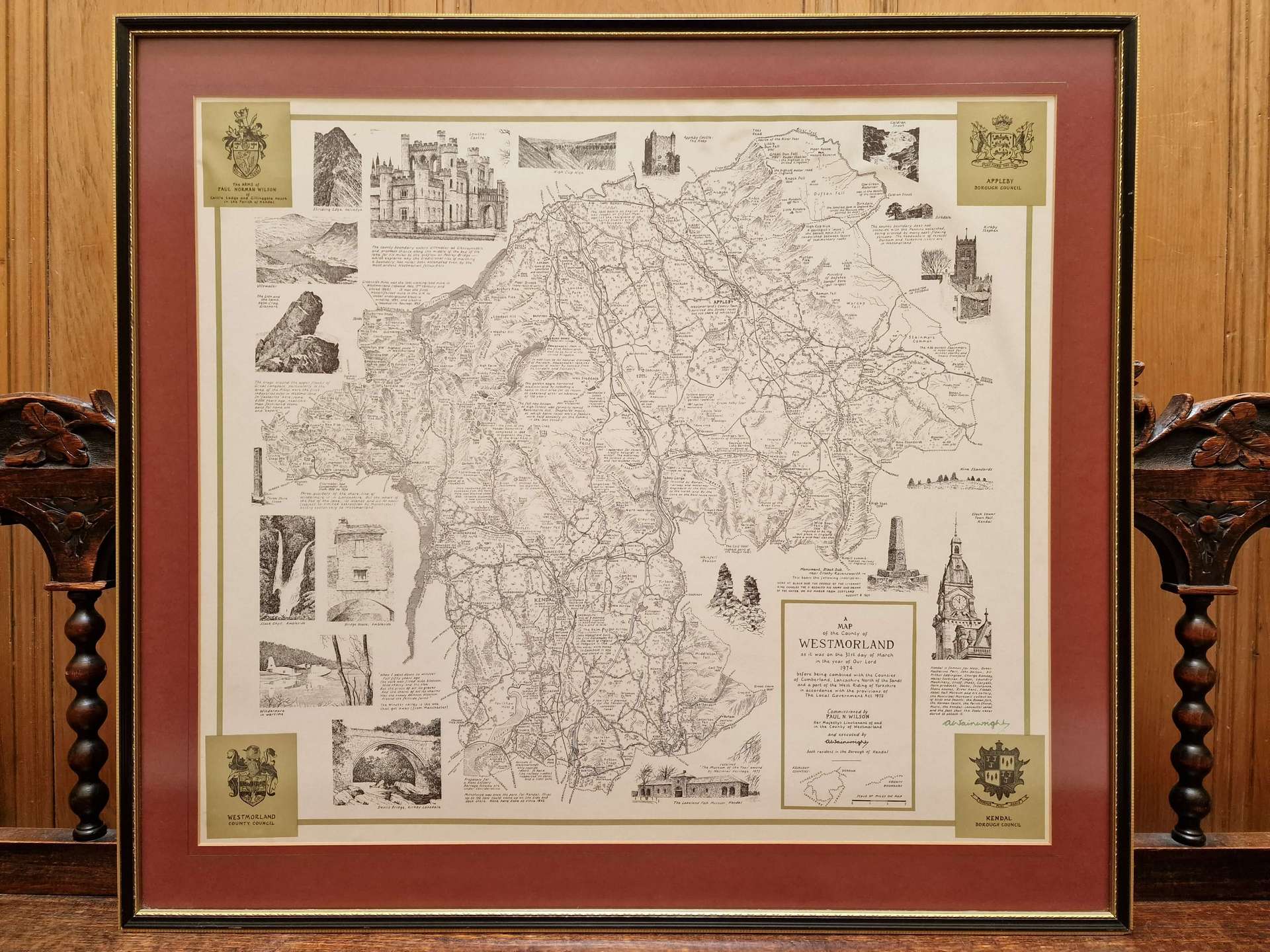
Regarded as one of Wainwright’s masterpieces, the book commemorates the old Westmorland County through nearly 2,000 line drawings showcasing buildings, landmarks, and scenery. Each parish in the county is meticulously documented with great detail. Shortly after its 1975 publication, Wainwright expressed gratitude to Paul in a letter, thanking him for his generous review of the book and the initial idea that sparked its creation.

The remaining copies were distributed meticulously based on the sequence of sales. Priced at £11.50, these books garnered immense popularity, with close to 400 units sold before their binding. All remaining copies were swiftly snatched up within two weeks of their official release. Andrew contends their true value should have been recognised at no less than £25 each. Wainwright’s initial scepticism about their potential for success was proven wrong, as over a decade after hitting the shelves, numerous individuals struggled to secure a copy, attesting to the enduring demand for this remarkable publication.
Driven by the demand, Andrew reached out to the Publishers Association’s head office to solicit guidance on the prospect of reprinting the book. His concern revolved around the ethical considerations for those who had invested in the original Limited Edition. However, his apprehension was unfounded. The Publishers Association assured him that a reprint would not compromise the integrity of the original edition. Their policy dictated that reprinting posed no ethical quandaries if a decade or more had elapsed since the initial publication and all existing copies had been sold.
The original Westmorland Heritage sold out when Wainwright transferred the copyright to the Gazette in 1983. Fortunately, this presented no obstacle, as Wainwright willingly consented to its reproduction. Subsequently, in 1988, a new publication, Westmorland Heritage – Popular Edition, was printed in 3,000 copies.


A renowned freelance book representative, Derek Walker served the Gazette during the 70s and 80s. During this time, he obtained a dozen uncased copies of the Popular Edition and had them expertly bound in leather. Featured here are a couple of examples from 1988, showcasing a binding quality that mirrors the excellence of the 1975 Limited Edition.


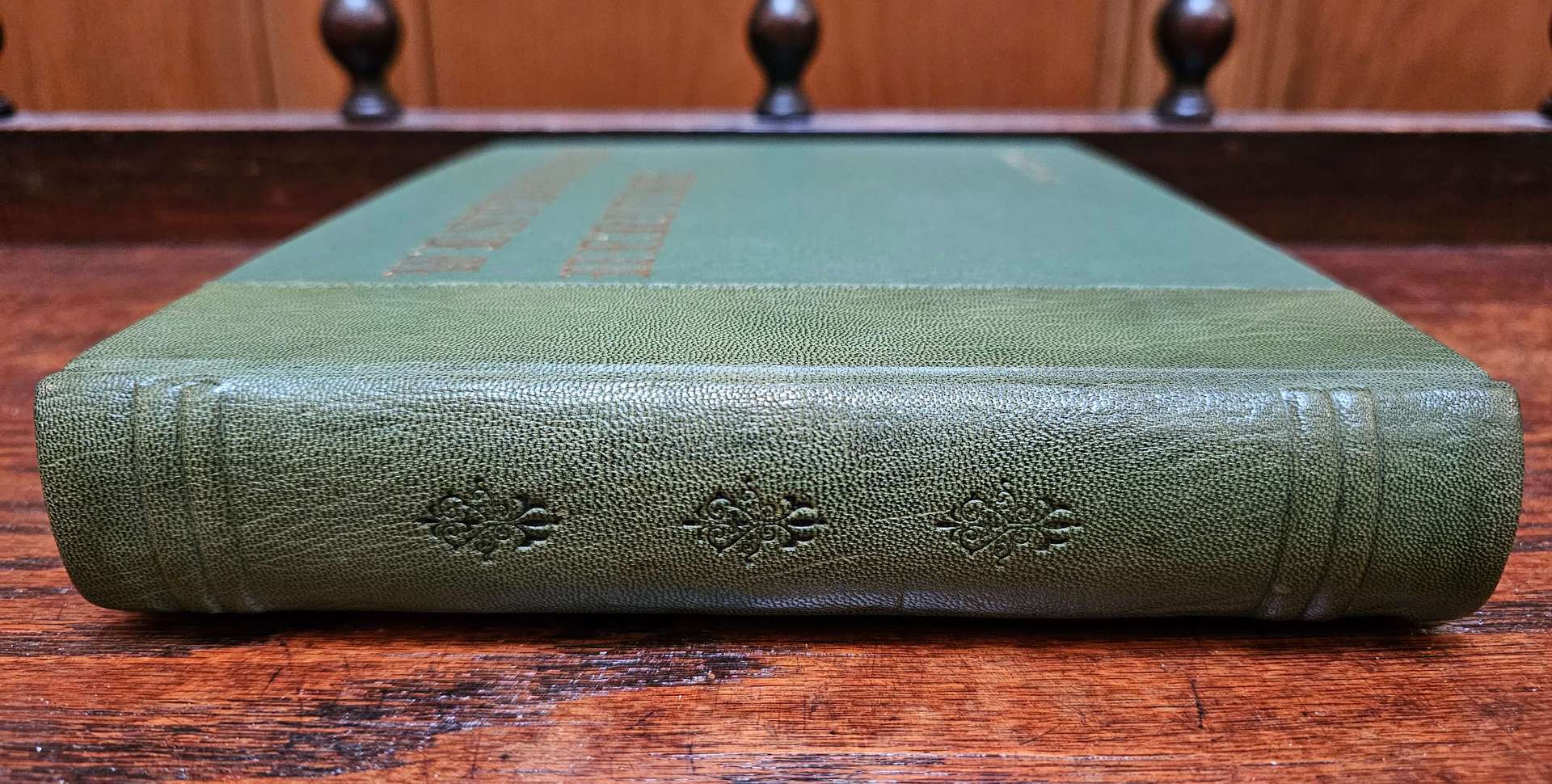
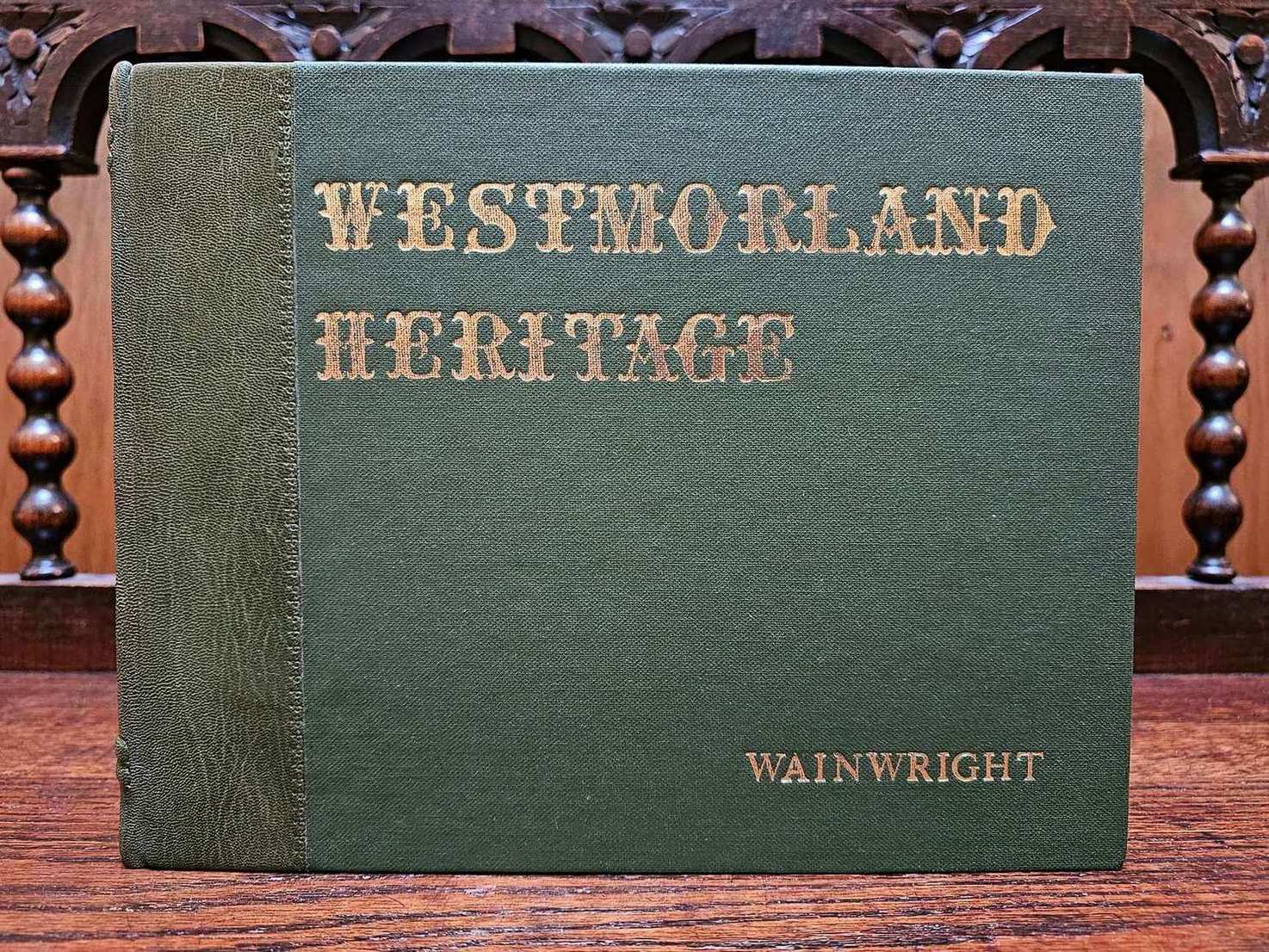
Following the 1988 Popular Edition, this title remained unavailable until 2004, when Frances Lincoln reprinted it. In early 2019, I obtained the remaining stock of Westmorland Heritage, and to my surprise, they all sold within just one hour.
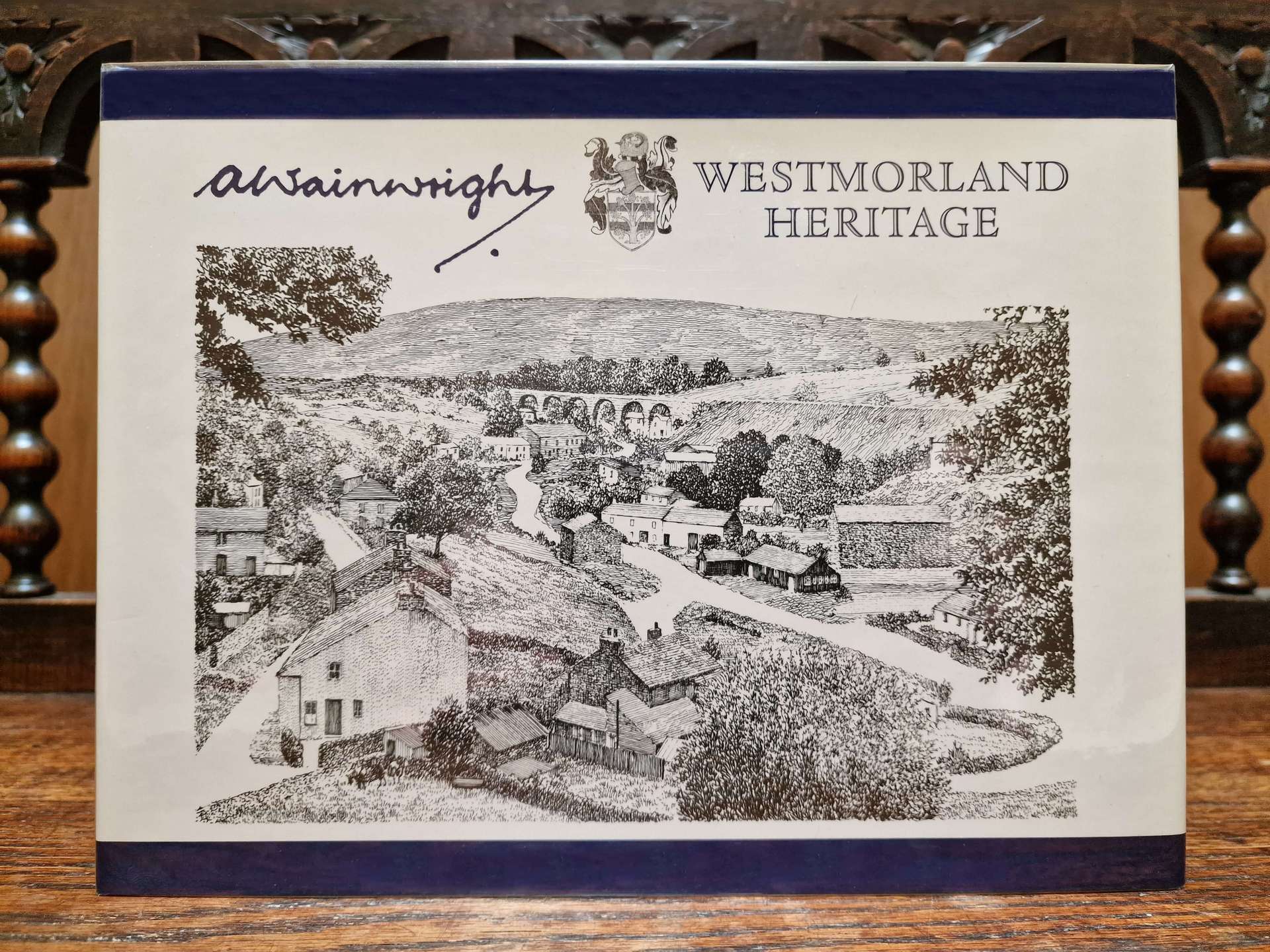

In 1990, Andrew assembled all the original Westmorland Heritage letterpress prints and framed them with Wainwright’s approval. This allowed the public to possess a piece of Cumbrian printing history. The framed prints gained popularity, and to this day, those plates featuring Lake District scenes command high prices

With gratitude to David Rigg, the former owner of Titus Wilson, Kendal, I assumed the responsibility as the new custodian of all the Wainwright book printing materials, encompassing the original gold blocking for both editions of Kendal-printed Westmorland Heritage books.
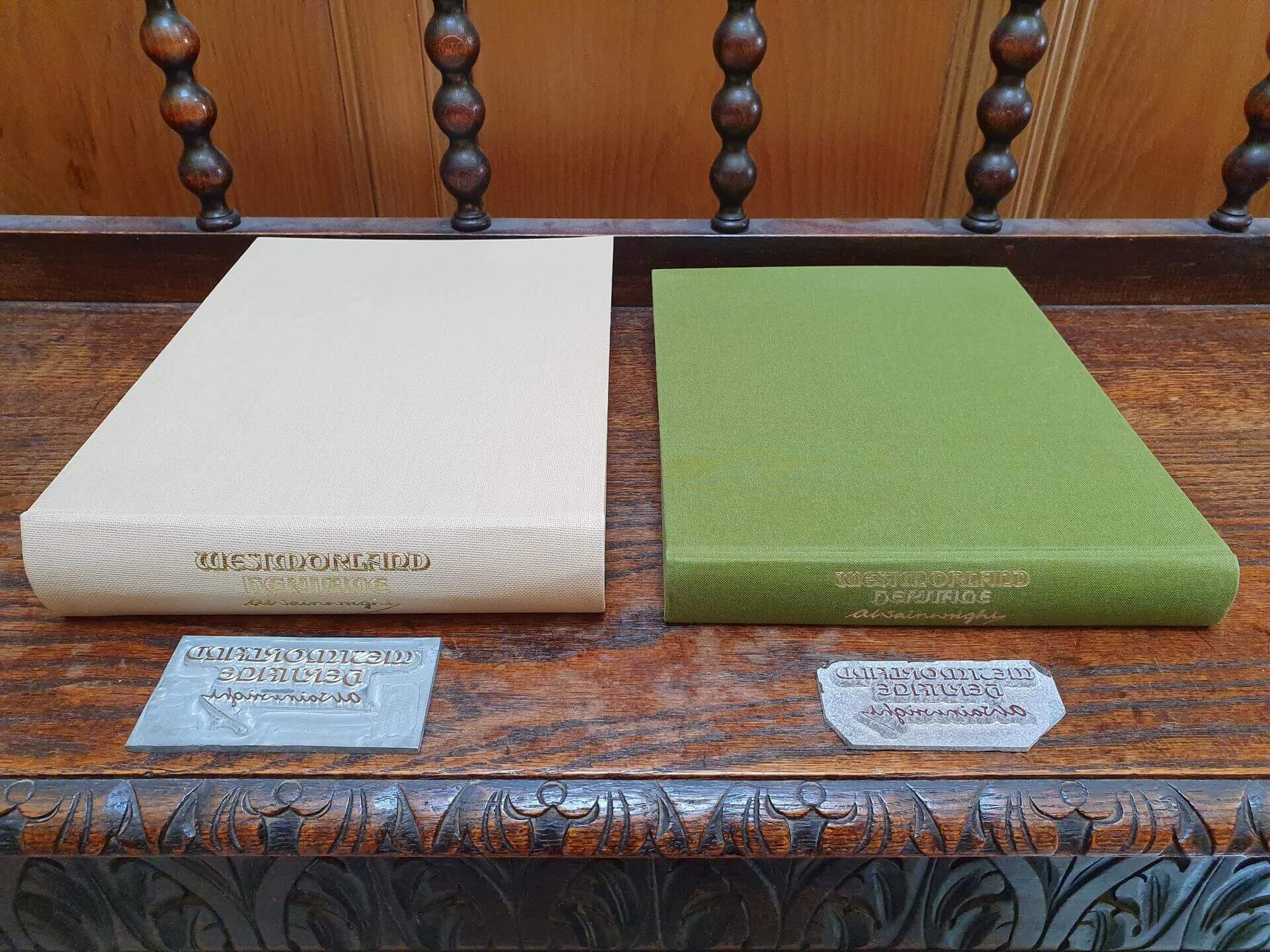
Securing all three editions of Wainwright’s masterpiece in pristine, unread condition posed a considerable challenge, requiring several years to complete the collection. Despite my satisfaction with these acquisitions, the story remained incomplete. My next focus was the elusive hand-numbered first copy of Westmorland Heritage, considered a holy grail for Wainwright enthusiasts and collectors.
By sheer chance, I found it in Selby, North Yorkshire.

Paul Wilson, the original owner of Book One, passed away in 1980. Throughout his life, Paul had a profound passion for windmills and watermills. His close companion, the accomplished architect John Major from Reading, was a recognised expert in these architectural structures, having authored numerous books on the subject. John had collaborated closely with Paul for several years.
Following Paul’s passing, the book remained in the possession of his wife. Eventually, it found its way into the hands of John Major, who cherished it for many years before deciding to pass it on. Seeking advice, John contacted Chris Irwin, an author from Ravenstonedale, Cumbria. Chris promptly recommended Anthony Vickers, a bookseller based in Selby, known for specialising in Wainwright’s publications with over twenty-five years of expertise. Anthony’s recognition as a Wainwright books dealer was documented in Hunter Davies’s Wainwright Biography. He acquired the book from John, who unfortunately passed away a few years later in 2009.
I initially met Tony as a customer, and our relationship evolved into a profound friendship. I was awe-struck when he revealed the book and Wainwright’s original 1975 letter to Paul. Tony had been the proud owner of the book for nearly a decade and had no intentions of parting with it. However, a couple of years later, he approached me and decided I should become this cherished volume’s following custodian. The news left me thrilled beyond my wildest dreams.

The Facebook Group Alfred Wainwright Books & Memorabilia is in its seventh year. Throughout this period, I’ve been astonished by the number of members who have contacted me, inquiring about spare copies of Westmorland Heritage as they struggle to find one. This indicates a notable demand, suggesting that a fourth publication of the book is warranted to allow a new generation to appreciate Alfred Wainwright’s genius.
Back to top of page

